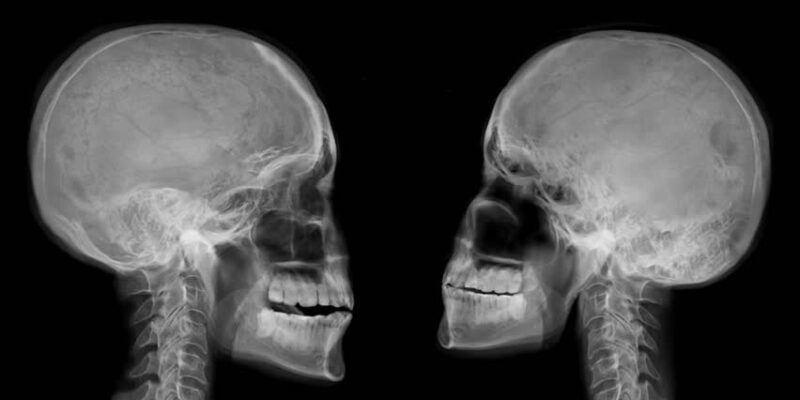– Dr Mriganka Shekar Bose
Craniofacial Medicine – Understanding its Role in Dental Medicine
I. Introduction
Craniofacial Medicine is a branch of allopathic medicine that deals with the study of craniofacial anomalies and their treatment. Anomalies of the craniofacial complex are of major concern, not only for oral health but also for mental health and social well-being. Craniofacial Medicine involves doctors from various fields such as Dentistry, Plastic Surgery, Neurosurgery, Pediatrics, and ENT Surgery. Specialist doctors from dental medicine such as Oral & Maxillofacial Surgeons, Orthodontists, Pediatric Dentists, and Prosthodontists are also involved in planning and providing treatments to patients with craniofacial anomalies. The catch with craniofacial medicine is that the anomalies are very vast and varied.
In many cases, it can be challenging to pinpoint a single cause of a particular condition or disorder. Instead, these conditions often present as a combination of symptoms that are collectively referred to as a “syndrome.” As such, identifying and treating syndromes typically requires a multidisciplinary team approach, involving healthcare professionals from a variety of disciplines.
This collaborative approach may involve physicians, nurses, psychologists, physical therapists, occupational therapists, speech-language pathologists, and other specialists working together to develop an individualized treatment plan that addresses the various symptoms associated with the syndrome. By taking a holistic approach to care, the multidisciplinary team can better identify the underlying causes of the syndrome and develop targeted interventions to address them.
Overall, the complex nature of many syndromes underscores the importance of a comprehensive, team-based approach to diagnosis and treatment.

II. Syndromes and their Classification
A syndrome can be defined as an aggregate of signs and symptoms associated with many morbid processes and constituting together the picture of the disease, related to each other. Richard & Goodman classified syndromes into six types based on different factors such as chromosomal abnormality, gene abnormality, environmental factors, embryological classification, single germ layer involved, and all three germ layers involved.
III. Mid-Face Deficiency Syndromes and the Role of Dentists
Mid-face deficiency syndromes are a group of conditions that affect the mid-face area and involve malformations of the bones and soft tissues. These syndromes are caused by a variety of genetic and environmental factors and can lead to severe functional and aesthetic problems. Dentists play a crucial role in the diagnosis and treatment of these syndromes. Some common mid-face deficiency syndromes and their treatments are discussed below:
A. Achondroplasia
Achondroplasia is an autosomal dominant disorder with class 3 malocclusion and short-limb dwarfism. About 90% of cases show gene mutation, and old parent age is a contributing factor. The frequency of Achondroplasia is about 1 in 5000 births. Treatment involves LeFort 3 osteotomy for mid-face advancement.
B. Treacher Collins Syndrome
Treacher Collins Syndrome is an autosomal dominant disorder with mandibular defects, open bite, micrognathia, macrostomia, and auricular defects. Its incidence is 1 in 25000 births. Treatment involves zygomatic and orbital reconstruction, maxillo-mandibular reconstruction, nasal reconstruction, and soft tissue and external ear reconstruction.
C. Apert Syndrome
Apert Syndrome is an autosomal dominant disorder with cranial and dental abnormalities such as dental crowding, delayed eruption, ectopic eruption, class 3 malocclusion, flat faces, and shallow orbits. The frequency of Apert Syndrome is 1 in 16000 births. Treatment involves surgery to increase intracranial space and orbital volume, enhance forehead and upper orbits morphology, and orthodontic treatment.
D. Crouzon Syndrome
Crouzon Syndrome is an autosomal dominant disorder associated with mandibular prognathism, inverted V-shaped palate, and curved nose. It occurs in about 1 in 25000 births and is often associated with paternal age over 35 years. Treatment involves prophylactic dental care, extraction of crowded teeth, placement of orthodontic devices, midfacial advancement, and jaw surgery.
E. Cleidocranial Dysplasia
Cleidocranial Dysplasia is an autosomal dominant disorder affecting bone and teeth with missing clavicles, prognathic mandible, deficient cementum formation, and failure of eruption of permanent teeth. Its life expectancy is generally normal. Treatment involves cranio-facial surgery, prosthodontic and orthodontic treatments.
F. Marfan Syndrome
Marfan Syndrome is a rare multisystem genetic disorder that affects the connective tissue with complications involving the heart, aorta, lungs, eyes, bones, and spinal cord. It is an autosomal dominant disorder, and there is no cure for it. Patients with Marfan Syndrome show a tendency for increased gingival inflammation, so oral prophylaxis of the dentition is advisable to reduce bacterial biofilm and to improve gingival health.
G. Hemifacial Microsomia
Hemifacial Microsomia is a congenital disorder affecting the development of the lower half of the face, commonly ears, mouth, and mandible. It usually occurs on one side of the face but can affect both sides. It is the second most common birth defect of the face after cleft lip and palate. Treatment involves various surgical and orthodontic interventions.
H. Pierre Robin Sequence
Pierre Robin Sequence is a congenital disorder caused by the arrest of mandibular development, resulting in micrognathia, cleft palate, glossoptosis, U-shaped cleft palate, deafness, mental retardation, and congenital heart defects. The incidence is estimated to be approximately 1 in 8,500 births. Treatment involves surgical intervention and conservative orthodontic approaches.
I. Fetal Alcohol Syndrome
Fetal Alcohol Syndrome is a specific pattern of defects in infants born to alcoholic mothers, including prenatal and postnatal growth deficiency and mental retardation. It occurs due to chronic alcohol exposure during pregnancy. There is no cure for Fetal Alcohol Syndrome, but supportive treatment can be provided, such as using salivary stimulants and antidepressants.
IV. Conclusion
Craniofacial anomalies are complex and require a multidisciplinary approach for their diagnosis and treatment. Dentists play a crucial role in the diagnosis and treatment of mid-face deficiency syndromes. Early diagnosis and treatment of these syndromes are essential to avoid functional and aesthetic problems. A thorough understanding of craniofacial medicine and its different syndromes is necessary for every dentist to provide comprehensive care to their patients.
References:
https://en.wikipedia.org/wiki/Hemifacial_microsomia
https://www.slideshare.net/ShahzadHussain3/craniofacial-sydromes





















Comments